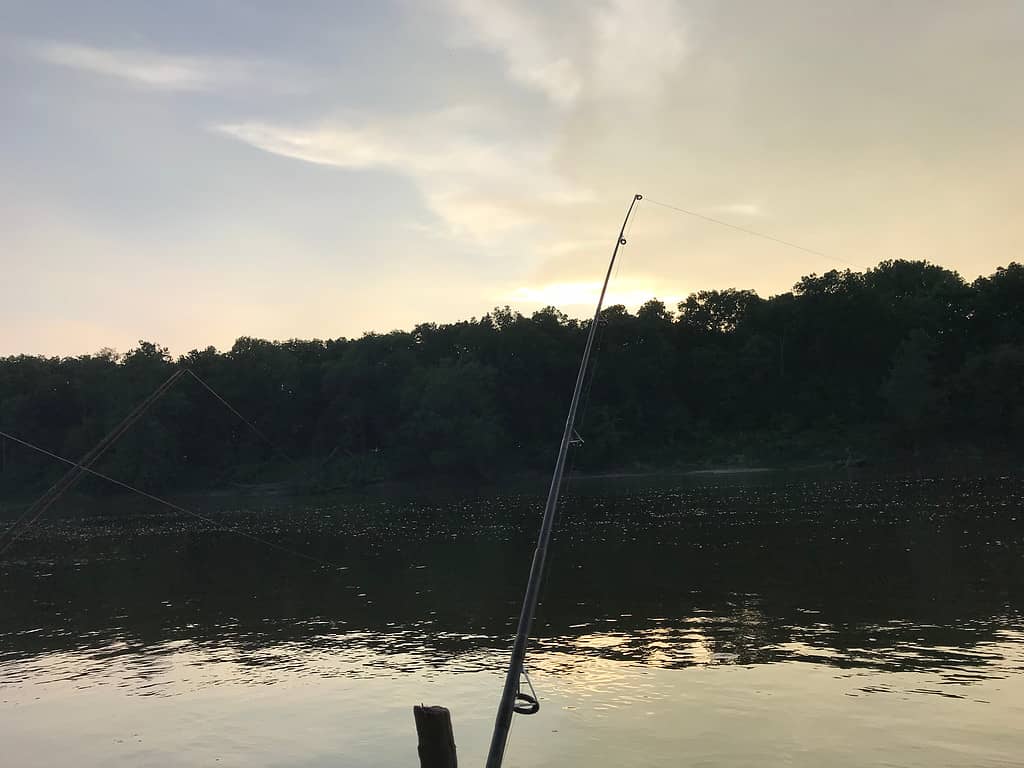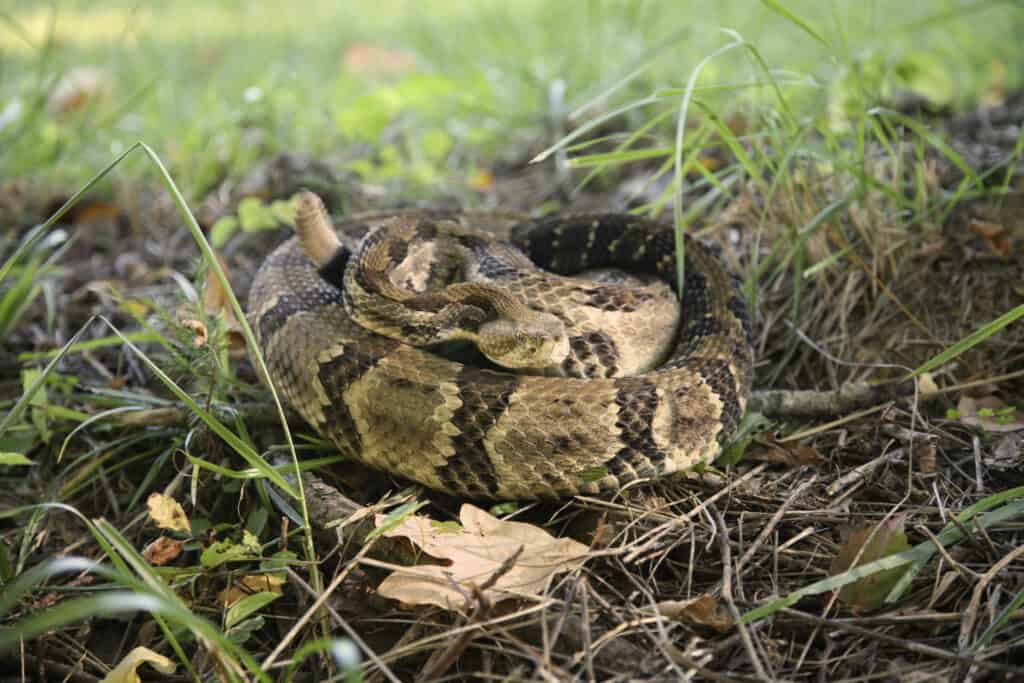If you plan on visiting Indiana or some of its neighboring states, you might be wondering if it’s safe to swim in the Wabash River. This massive river connects Indiana to Ohio and is a true national landmark of the Midwest. But is it safe to swim in? Does the Wabash River suffer from pollution, or are there potentially dangerous creatures that live in its depths? Let’s find out! But first, let’s look at a bit of background on the legendary Wabash River.
What is the Wabash River?
The Wabash River is a majestic waterway that runs through the states of Ohio, Indiana, and Illinois in the center of the United States. The Wabash River is well-known for its captivating beauty and extensive history. It also has a distinct position in the region’s natural heritage.
Location and Geography
The Wabash River flows for over 503 miles through the Midwest. It provides a crucial lifeline for the towns that prosper along its banks. Its origins are in western Ohio, where a number of minor streams merge to form the river. From there, it flows through Indiana’s plains, enveloping the surroundings in its beautiful grandeur. It eventually combines with the Ohio River close to the Illinois town of Mount Vernon.

The Wabash River (pictured) starts in Ohio and travels throughout most of Indiana before ending in the Ohio River.
©Brian C. Gossard/Shutterstock.com
Age and History
The Wabash River has a fascinating past that spans many centuries. For a very long time, this river was revered as a sacred resource by Native American tribes including the Miami, Shawnee, and Delaware peoples. They realized its great worth as a means of nourishment, travel, and spiritual ties. Later, the richness of the river and its possibilities for trade and commerce attracted European immigrants. The Wabash River still plays a significant role in the region’s cultural legacy today.
Unique Features
The Wabash River’s rich environment is home to a broad variety of plant and animal species. This diversity is what makes the river unique. Along its banks, lush foliage serves as a home and haven for a variety of animals. The Wabash River is home to a thriving ecosystem that adds to the region’s biodiversity.
Opportunities for Recreation and Scenic Beauty
The stunning views along the Wabash River are incredibly captivating. Its serene waters elegantly flow through scenic vistas that include hills, farms, and forested areas. Travelers are encouraged to kayak, fish, or take a boat out on the river to discover its hidden gems. The river’s serene and breathtaking panoramas provide refuge to nature lovers and photographers alike.
Historical and Cultural Landmarks
The Wabash River is a portal to history in addition to being a natural beauty. The river once saw the passage of pioneers and explorers and was crucial to the westward development of the United States. Along its path, you may see historical sites including charming villages, antiquated mills, and the remains of a once-thriving river trade. These locations share historical narratives and provide a window into the region’s rich cultural history.
Pollution in the Wabash River
Both people and wildlife have long relied on the Wabash River for survival. But underneath its placid exterior, the river is engaged in a quiet battle with pollution. The Wabash River faces several problems that endanger both the biological integrity of the river and the well-being of the communities it supports as one of the principal tributaries of the powerful Ohio River.
Occupational Waste and Toxic Runoff
The Wabash River’s problems with pollution have surely been exacerbated by the industrial environment along its banks. Along the river, there are several factories and power stations that discharge effluents into the river. These effluents are contaminated with harmful chemicals, heavy metals, and other materials.
Pesticides, fertilizers, and silt are carried by precipitation as it flows across commercial and agricultural areas, adding to the river’s already high levels of pollution. The buildup of these pollutants presents serious risks to aquatic life, upsetting the delicate ecosystem of the Wabash River and jeopardizing the well-being of fish, birds, and other species that depend on the river for their existence.
Sewage Disposal and Nutrient Overloading
Along the Wabash River, urban developments and residential areas play a key role in the environmental problems it faces. Untreated or just partially treated effluent is dumped straight into rivers due to insufficient sewage treatment and old infrastructure. Harmful algal blooms are brought on by the overabundance of nutrients, such as nitrogen and phosphorus, from agricultural runoff and human waste.
Aquatic animals struggle to live in “dead zones” created by these blooms, which lower the oxygen levels in the water. The spread of algal blooms endangers not just the environment of the river but also the quality of the drinking water sources for neighboring towns and villages, making pollution a problem for public health as well.
Lack of Regulation
The absence of efficient control and monitoring is one of the underlying problems that is aggravating pollution in the Wabash River. Contaminants have continued to enter the river as a result of lax enforcement of environmental regulations, insufficient financing for water quality initiatives, and a lack of resources for monitoring pollution sources. It is difficult to pinpoint exact polluters, put required corrective measures in place, and hold accountable those who are at fault when there is so little supervision. To safeguard the Wabash River, a stringent set of rules must be put in place to assure compliance, prevent pollution, and encourage sustainable safety of the river. These rules must also be adequately funded and subject to frequent inspection.

The Wabash River (pictured) was once a hotspot for fishing, but is now facing serious ecological damage.
©BBViews/Shutterstock.com
Creatures That Live in the Wabash River
The Wabash River’s dazzling waters hide a world filled with a variety of fascinating organisms. The river ecology is home to a diverse variety of fish, crustaceans, and other species, from the bottom of its waters to the lush ecosystems along its shores.
Aquatic Animals
A variety of fish species, each adapted to its own ecosystem, may be found in the Wabash River. Among the well-known game species present in the river are largemouth bass, channel catfish, and bluegill. Just as well, the cleaner and fast-flowing areas of the Wabash are home to smallmouth bass, walleye, and sauger. Freshwater mussels, which filter the river’s water and improve its general health, flourish on the rocky and sandy bottom of the river.
The Wabash River is home to a wide variety of invertebrates in addition to fish. The riverbed is home to crawfish, freshwater shrimp, and mayflies, which are crucial food supplies for larger animals. While damselflies flutter amid the river’s foliage, dragonflies gracefully hover above the water. These insects help with pollination, hunt down mosquitoes and other pests, and their presence is usually a sign of a healthy habitat.
Riparian Animals
The Wabash River’s lush greenery serves as an essential home for a variety of animals. Great blue herons strike precisely to catch fish as they move over the shallows. Belted kingfishers swoop down to hunt tiny prey while perched on trees. A beautiful bald eagle may occasionally swoop overhead while studying the river with its keen eyes for a chance.
White-tailed deer feed on the fragile shoots of shrubs and grasses further into the wooded regions. Along the river’s side, raccoons forage while river otters frolic dart in and out of the water. Beavers build complex dams that change the course of rivers and provide new habitats for many animals. Foxes and coyotes sneak through the area along the banks in search of small animals and birds.
As migrating songbirds such as warblers and thrushes temporarily seek sanctuary in the dense foliage on their arduous treks, birdsong fills the air around the Wabash River. Some visitors include Eastern bluebirds and American goldfinches.
Are There Dangerous Animals in the Wabash River?
The majority of the organisms in the Wabash River are not dangerous to humans. However, certain species may show defensive responses if disturbed or threatened. For instance, snapping turtles, if handled incorrectly or cornered, can administer a painful bite. So, it is best to keep a safe distance and admire them from a distance. Muskrats may also bite if threatened.
It is important to remember that certain areas of Indiana, notably those close to the Wabash River, are home to venomous snakes including copperheads and timber rattlesnakes. Even though encounters with these snakes are uncommon, it is wise to exercise caution and have an understanding of their habitats and behavior. If you come across one of these snakes, give it plenty of space! And most importantly: Don’t try to handle or spook it!

If you see a timber
rattlesnake
(pictured) along the banks of the Wabash River, keep a healthy distance!
©iStock.com/NajaShots
Conclusion: Is the Wabash River Safe to Swim In?
Sadly, no. The Wabash River has been closed for swimming as well as fishing and other activities as of 2023. A significant amount of E. coli has been found in the river, which has led to it being closed and labeled as an impaired waterway by the Clean Water Act.
The Wabash River’s water quality, which can be impacted by a number of causes, is crucial to swimmer safety. Although the river’s water was once generally regarded as suitable for recreational use, there are currently some possible contamination problems that should be taken into consideration. Inadequate sewage treatment, agricultural runoff, and industrial discharge are a few sources that might be adding pollutants to the water. To guarantee a safe swimming experience, monitoring methods and routine water testing are necessary.
To protect the Wabash River’s water quality, local towns, government entities, and environmental groups are all putting forth great effort. Regulations like the Clean Water Act are meant to reduce pollution and safeguard public health. It’s crucial to remember, though, that natural bodies of water are always going to be dangerous in some capacity. Swimmers should take precautions, particularly after heavy rain or during times of high water flow when it is more likely that toxins may reach the river.
When the Wabash River reopens again for swimming and recreation, visitors should take into account the most recent water quality data and recommendations from regional authorities. Avoiding places close to industrial discharge sites, sewage treatment facilities, or agricultural sites is advised. Furthermore, minimizing any potential health hazards may be accomplished by maintaining proper hygiene, refraining from ingesting water, and quickly washing off after swimming.
Hope for the Future of the Wabash River
In the end, careful evaluation of a number of variables is necessary when determining if the Wabash River is safe for swimming. The water quality of the river was once acceptable for recreational activities, but it is crucial to be aware of potential contamination sources and keep up with the most recent water quality studies. As of writing this article, the Wabash River is still closed due to an outbreak of E. coli. Collaborative efforts among regulatory bodies, environmental organizations, and local communities are working towards maintaining and improving the river’s health.
The photo featured at the top of this post is © SNEHIT PHOTO/Shutterstock.com
Thank you for reading! Have some feedback for us? Contact the AZ Animals editorial team.







